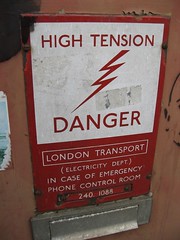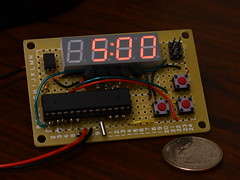Why are suspense, tension and surprise all so important? We’ve established that suspense and tension draw the readers along through your story, and compel them to keep reading. But it’s more than just making readers read, and rewarding them (with surprise sometimes)—it’s making them want to read your book (and your next one).
 James Scott Bell highlights one reason why these elements are so important: “Modulating tension is one of the keys to writing fiction” (Revision And Self-Editing, 82). We started off our series with a quote from agent Noah Lukeman: “Suspense, more than any other element, affects the immediate, short term experience of the work” (The Plot Thickens, 119).
James Scott Bell highlights one reason why these elements are so important: “Modulating tension is one of the keys to writing fiction” (Revision And Self-Editing, 82). We started off our series with a quote from agent Noah Lukeman: “Suspense, more than any other element, affects the immediate, short term experience of the work” (The Plot Thickens, 119).
But Lukeman further explains why being conscious of tension and suspense are so important:
The presence of suspense is . . . a feat and shows promise, since it indicates that the writer is writing more for the reader than for himself. (120)
I think it’s easy—and for many of us, important—to draft for ourselves. I’m told Stephen King says you should write the first draft “with the door closed”—with little to no input or interference from others, so that you can get out the story you’re trying to tell. Remember the delight, the way you relish the scenes that you’ve been waiting for your whole book long?
But when we’re ready to open that door, to share your writing with an eye to improving it, it’s not about what you loved writing and what you still love reading anymore. It’s about what someone else—an agent, an editor, a customer in a bookstore—will love reading, what will suck them in and drag them on a relentless, compelling journey with your characters. Focusing on the experience of your readers shows that you’re not just in it to entertain yourself and a few friends—you’re here to tell a story, to get people reading—to entertain.
What do you think? Why are suspense, tension and surprise so important?
Photo credit: Aart von Bezooyen
 Obstfeld says, “The key to a good payoff is not to give the reader what you think they want” (55). That’s not to say that the hero and heroine shouldn’t get together in a romance (they should), or that the hero can’t catch the villain in a thriller (he should). It does mean that giving the reader exactly what you promised all along and only that is not enough to reward the suspense you’ve created for that goal.
Obstfeld says, “The key to a good payoff is not to give the reader what you think they want” (55). That’s not to say that the hero and heroine shouldn’t get together in a romance (they should), or that the hero can’t catch the villain in a thriller (he should). It does mean that giving the reader exactly what you promised all along and only that is not enough to reward the suspense you’ve created for that goal. The fact is, when you’re still in love with your characters and your story, you’re more than willing to read the scenes that don’t really move the story along. One way to counteract this is to set the story aside. Yes, we’re always told to do this, and this is a big reason why. Set it aside for 6 months to a year and give yourself some distance from the work.
The fact is, when you’re still in love with your characters and your story, you’re more than willing to read the scenes that don’t really move the story along. One way to counteract this is to set the story aside. Yes, we’re always told to do this, and this is a big reason why. Set it aside for 6 months to a year and give yourself some distance from the work.




